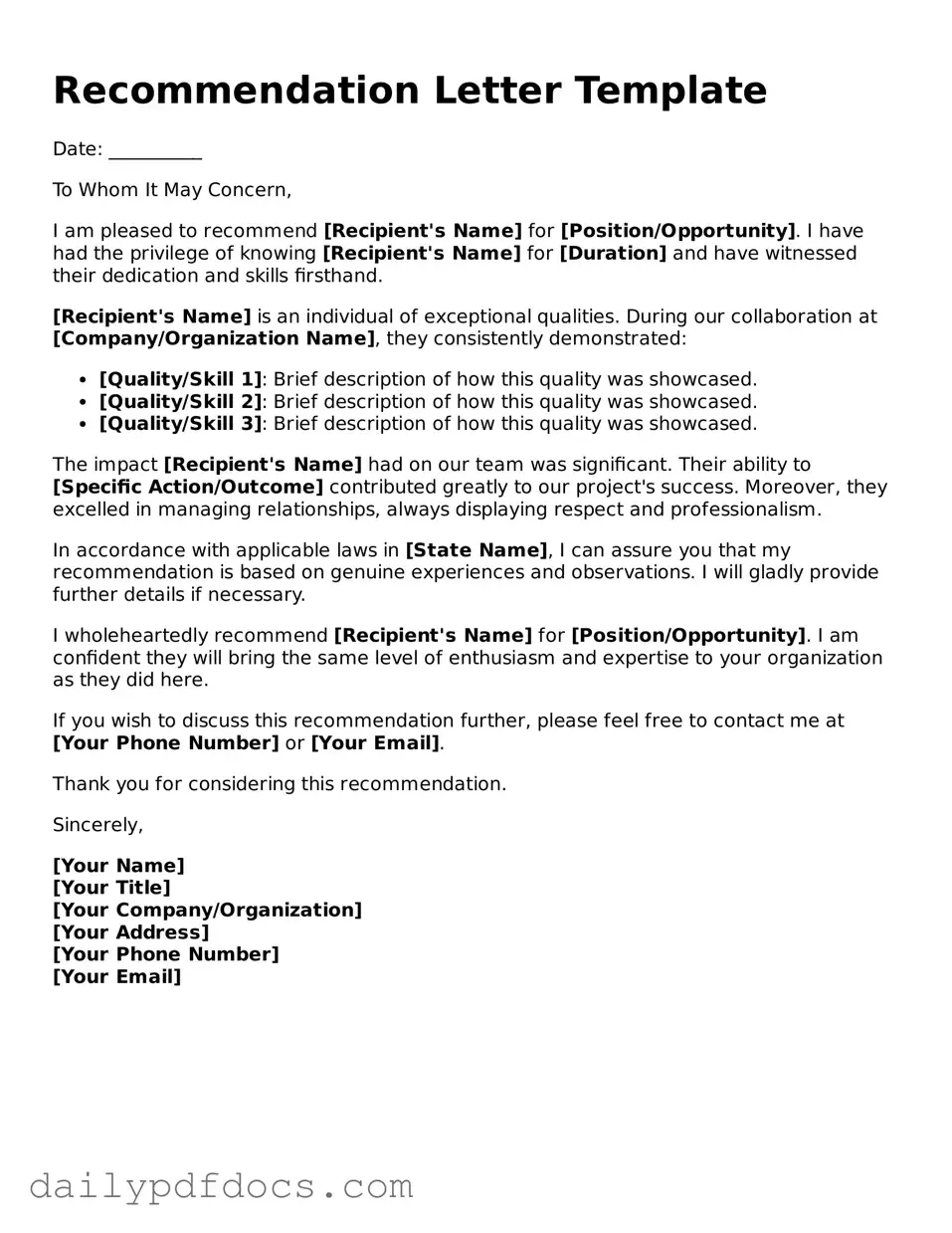Recommendation Letter Template
Date: __________
To Whom It May Concern,
I am pleased to recommend [Recipient's Name] for [Position/Opportunity]. I have had the privilege of knowing [Recipient's Name] for [Duration] and have witnessed their dedication and skills firsthand.
[Recipient's Name] is an individual of exceptional qualities. During our collaboration at [Company/Organization Name], they consistently demonstrated:
- [Quality/Skill 1]: Brief description of how this quality was showcased.
- [Quality/Skill 2]: Brief description of how this quality was showcased.
- [Quality/Skill 3]: Brief description of how this quality was showcased.
The impact [Recipient's Name] had on our team was significant. Their ability to [Specific Action/Outcome] contributed greatly to our project's success. Moreover, they excelled in managing relationships, always displaying respect and professionalism.
In accordance with applicable laws in [State Name], I can assure you that my recommendation is based on genuine experiences and observations. I will gladly provide further details if necessary.
I wholeheartedly recommend [Recipient's Name] for [Position/Opportunity]. I am confident they will bring the same level of enthusiasm and expertise to your organization as they did here.
If you wish to discuss this recommendation further, please feel free to contact me at [Your Phone Number] or [Your Email].
Thank you for considering this recommendation.
Sincerely,
[Your Name]
[Your Title]
[Your Company/Organization]
[Your Address]
[Your Phone Number]
[Your Email]
